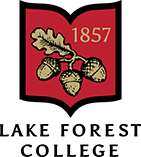In terms of taxonomy, the ginkgo has no living relatives. In fact, it technically represents an entire fifth of the Plant kingdom as far as diversity goes. The ginkgo is the last species of it’s kind, as scientists were able to prove that there were fossil remains of other members of the ginkgoaceae.

Leaves: Like much the rest of the plant, the leaves are another feature about the ginkgo that’s unlike anything else in the plant kingdom. They create a shape that looks most like a fan.

The immature ginkgo’s leaves will actually have a split right in the middle. This is actually where the ginkgo takes it’s Latin name. Linnaeus (the father of modern taxonomy) was sent a seed and attempted to grow it in north Sweden. He didn’t have much success in creating a fully grown ginkgo, unaware of this he simply named it biloba. Biloba can be broken down into Latin roots bi (meaning 2) loba (meaning lobes) which accurately depicts it’s immature leaves.
In autumn, the ginkgo is famous for the brilliant yellow it’s leaves turn before falling off.

ES 203: SPRING FLORA OF THE GREAT LAKES
You can highlight additional information here or add more related links.
• You can link to other LFC.com pages
• You can link to an outside url
• You can link to a files such as a pdf

